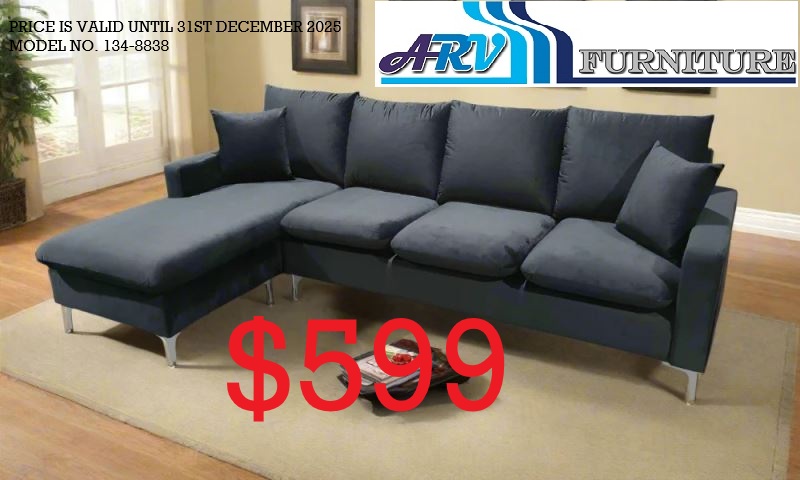
If you’re shopping for a sectional sofa for your living room — whether from ARV Furniture or elsewhere — here’s a clear guide to help you choose a “perfect” one. I break it into what to think about + some real sectional sofa examples so you can match ideas to options.
✅ What to consider when choosing a sectional sofa
• Measure your space carefully
First, measure your room — and also doorways, stairwells or hallways the sofa must pass through. This ensures delivery and installation aren’t a nightmare.
Consider where the sectional will sit. For example: an L-shaped sectional works well tucked into a corner, while a U-shape needs more space and suits open or large living rooms.
Leave space around the sofa — for flow, tables, walking space, and a harmonious look.
• Choose the right shape & orientation
L-shaped sectionals are among the most popular: space-efficient, good for corners or smaller-to-medium rooms.
U-shaped sectionals maximize seating — ideal for entertaining or large families — but can overwhelm smaller rooms.
If you have a smaller space or want something less bulky, some sectionals also come with a chaise or modular configuration you can adapt.
• Pick upholstery and materials based on lifestyle
For durability and easy maintenance — especially if you have kids, pets, or a high-traffic household — performance fabrics (synthetic, stain-resistant) or leather are smart choices.
If comfort and softness are more important (for lounging, cozy nights, more relaxed vibes), fabrics and soft cushions (foam, down-blend, etc.) can give a more inviting feel.
Consider how the color, pattern or texture fits with your existing décor. Neutral colors are versatile, while bold or textured upholstery can make the sectional a focal point.
• Think about comfort, seating depth and cushion quality
Seat depth matters: deeper seats are great for lounging and relaxing, while shallower seats suit upright sitting.
Cushion fill and support: firmer cushions (foam, high-resilience foam) tend to hold shape and support better over time; down or soft blends give more plush comfort but may need more maintenance.
Don’t forget ergonomic comfort — backrest height, armrest style, and overall seating posture should match how you’ll use the sofa (lounging, upright sitting, lounging with feet up, etc.).
• Match style and décor — but think long-term
The sectional is often the largest piece in your living room; its style, color, and silhouette heavily influence the room’s vibe. Opt for a style that works with your interior design (modern, cozy, minimalist, classic, etc.).
Also think long-term: avoid overly trendy designs if you want to keep the sofa for many years; classic or neutral styles tend to age better and integrate easier with future redecorations.
• Prioritize quality if you plan to keep it long-term
Look for a good frame (e.g. kiln-dried hardwood) rather than particleboard or cheap materials — this affects durability and longevity.
Well-constructed joints, quality stuffing, and upholstery with high “double rub” (for fabrics) or durable leather help ensure the sectional stays comfortable and intact for years.